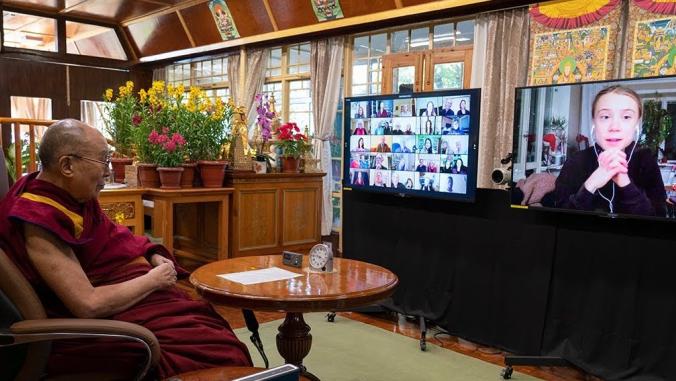The business of clean energy equity for all
Here are three ways to advance a inclusive, green economy.

Adapted from the VERGE Weekly newsletter, published every Wednesday.
In the nitty-gritty, day-to-day work of building a clean-energy economy, it's easy to lose sight of the bigger picture. Namely that, as much as this movement is about moving markets and cleaner electrons, it’s ultimately about people: improving lives and ensuring a livable planet — not just for some, but for all.
After all, we’re not really "saving the earth." We’re saving ourselves.
Consider companies, climate change and social inequity. A case can be made that the three are so inextricably interconnected that we’ll never achieve one without the others. That means building a clean economy strong enough to lift people out of poverty isn’t just a moral and environmental imperative. It’s a significant business opportunity, too.
Take California, for example, both what’s working and what’s not.
It’s no surprise that California is leading the way on advancing some of the country’s most ambitious climate policies — most recently with SB 100, which requires the state to ensure 100 percent of its electricity comes from carbon-free sources by 2045. But the Golden State has also been out ahead on forwarding climate policies that benefit those disproportionately hurt by legacy fossil-fuel energy systems. SB 535, for example, passed in 2012, mandates that 25 percent of the proceeds from the state’s cap-and-trade program are invested directly in projects that benefit disadvantaged communities.
And yet, despite California’s climate ambition, low-income communities and communities of color in the state — and elsewhere — continue to benefit the least and suffer the most from a changing climate. Low-income families, who are far more likely to rent their homes and therefore have limited access to solar or efficiency upgrades, pay over half of their income on energy bills — 53 percent, on average, according to the Greenlining Institute's research into energy equity. They also bear the greatest negative health impacts. Sixty-two percent of California residents living within six miles of an oil refinery or cement or power plant are people of color — and their children are four times more likely to have asthma, compared to Caucasian children, missing an average of 1.1 million school days annually, just from asthma alone.Despite California’s climate ambition, low-income communities and communities of color in the state — and elsewhere — continue to benefit the least and suffer the most from a changing climate.
At GreenBiz, we’re doing our part to help address this.
We are proud to announce our inaugural Clean Energy Equity Showcase. Launched as part of our upcoming VERGE 18 conference and expo, it’s designed to honor and highlight three Bay Area-based organizations doing exemplary work to create an inclusive and equitable clean economy. This year’s Clean Energy Equity Changers include GRID Alternatives, the Greenlining Institute and Rising Sun Energy Center.
As part of this effort, I spoke with the leaders of each organization to learn more about their programs. (You can hear my interview with GRID Alternatives co-founder and CEO, Erica Mackie, on GreenBiz 350 podcast from two weeks ago; my interview with Greenlining’s Orson Aguilar from Friday's podcast; and stay tuned for this week's with Rising Sun’s Jodi Pincus).The Clean Energy Equity Showcase is designed to honor and highlight three Bay Area-based organizations doing exemplary work to create an inclusive clean economy.
Our conversations were rich with insights about how all of us are doing when it comes to ensuring environmental justice, what’s needed to advance it and the role of the private sector. Here are three key takeaways:
1. Build solutions with communities, not just for them
Mackie emphasized the extent to which people who are suffering health or economic problems connected to our current, dirty energy and manufacturing systems also have the greatest sense of the solutions that will undergird new, cleaner and more inclusive ones. In this respect, it is about ensuring that families on the frontlines of climate injustice are the first to benefit, and actually engaging them directly participate actively in creating solutions.
Her call to action was powerful: To ensure that we’re building businesses and electing officials in ways that harness the leadership, entrepreneurship and ingenuity of communities that are paying the price. "These are the folks who understand the work that needs to be done," she reminded us.
2. Focus on careers that lift people out of poverty
Creating jobs for job-creation sake is not the answer. California, for example, is the richest economy in the United States, but also has the nation’s highest level of poverty. While the state has an impressively low unemployment rate, those among Latino and African American populations, especially youth, are significantly higher, and many work multiple low-wage jobs just to make ends meet.
As Pincus pointed out, "Training people for jobs in the trades — jobs that are unionized and benefitted — is actually where a lot of the climate adaptation work will be done." That includes jobs such as operating engineers who will build walls to address sea-level rise, and the necessary infrastructure for utility-scale solar. The goal is to ensure we’re creating what Pincus called "high road jobs" — career pathways that are sustainable and don’t displace people, but create opportunities to bring clean energy and transportation infrastructure directly into the communities in which they live.
3. Businesses benefit by putting equity and inclusion at the center of their strategy
Like any thriving ecosystem, diversity engenders resilience. California already has a majority-minority population, and we know that much of the nation is following suit. As such, businesses that prioritize engaging, understanding and investing in diverse communities are the ones most likely to be poised for the future. After all, these citizens are an essential part of businesses’ customer and workforce bases — and, as Pincus posed, "If you don’t understand and engage your diverse constituents, how can you market to and employ them?"
Pincus also reminds us that the millennial and Gen Z generations are more socially and environmentally conscious, and that’s true across skin color and income status. Doubling down on triple-bottom-line strategies will have cascading benefits, including both social and financial returns.
I’ll leave you with a poignant comment that Greenlining Institute’s president, Orson Aguilar, made in our conversation:
"All communities, including communities of color, have the same dreams as one another. They want to raise their children in a clean and safe environment, they want their children to go to good schools and they want good job opportunities. We need to ensure our business practices and policies lead to that. We can talk all day but, at the end of the day, this has to hit the ground in a real way."





